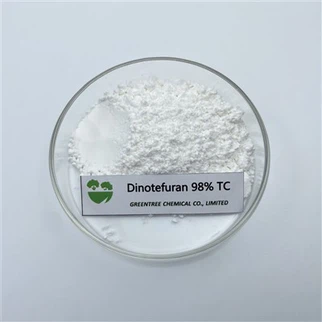Naphthalene acetic acid is abbreviated as NNA. It is a plant growth regulator. It has been widely used in fruit tree production in recent years. However, due to insufficient understanding of growth regulators, it often causes adverse effects on fruit farmers. A few things to keep in mind:
1. Pay attention to the registered content, usage method and period.
There are currently registered concentrations of naphthalene acetic acid: 0.1%, 2.5%, 5%, 95%, 40%, 1%, 20%, 0.03%, etc., only 20% of the content has been registered on apple trees. The period of use, the amount of use, and the method of use must be operated in strict accordance with the label instructions, and should not be used arbitrarily.
2. Second, the method used on fruit trees: (for reference only)
(1) Fruit thinning: Jinguan and Marshal apples and pears were sprayed with 20 mg/L naphthalene acetic acid two weeks after full bloom, and Guoguang apple was sprayed with 20 mg/L naphthalene acetic acid + 300 mg/L ethephon 10 days after full bloom, and significant fruit thinning effects were obtained. .
(2) Prevent pre-harvest fruit drop: Tsugaru, Marshal and its short-branched varieties, Hongyu and other apples have serious pre-harvest fruit drop, 5-10 days before the start of pre-harvest fruit drop, spray 30-40mg/L of naphthalene acetic acid, Spraying again every 10 to 15 days can prevent fruit drop before harvesting and promote fruit coloring. Spraying with 70 mg/L naphthalene acetic acid around July 20 can reduce fruit drop by 26% to 46%, and increase the rate of colored fruit by 49%.
(3) Promoting rooting of cuttings: Treating grape cuttings with 500-1000 mg/L naphthalene acetic acid solution for root dipping (quick dipping) can improve the survival rate of cuttings and increase the amount of rooting. Take 1000g of talcum powder and add 0.5-2g of naphthalene acetic acid powder, mix well, soak the base of the cutting with water, then dip it in an appropriate amount of powder, and insert it into the seedbed. This method is used for cuttings of pomegranate and other seedlings. It can take root several, and the survival rate is more than 90%.
(4) Inhibiting the sprouting and tillering of the scissors: Many varieties of the Marshal and Fuji apples are prone to sprouting and sprouting at the larger scissors and saws, which not only consumes a lot of nutrients, but also seriously affects the ventilation and light transmission of the inner chamber. If 1% or 1.5% naphthalene acetic acid solution is used to coat the shears and saw cuts in winter shearing, it can prevent the occurrence of sprouting.
(5) Promote rooting and survival of planted seedlings: When saplings are planted, the roots can be immersed in 50-100 mg/L naphthalene acetic acid solution for 20 minutes or sprayed on the roots to improve the survival rate of planting. Before planting, soaking the roots with low concentration naphthalene acetic acid for a long time can also get good results. For example, 10 mg/L naphthalene acetic acid solution was used to soak the roots of hawthorn for 12 hours before planting. Compared with the control, the weight of new roots increased by 59.5%, the number of roots increased by 63.6%, the survival rate increased by 10-15%, and the photosynthetic intensity of leaves increased by 29%. ~83%, and the growth of new shoots increased by 20cm ~ 34cm.
(6) Prevent grape shattering: When Jufeng grapes are the size of pea grains, dipping the ear with 300mg/L naphthalene acetic acid can prevent grain shattering.
(7) Promote seed germination: Hawthorn seed shells are thick and hard, and germination is difficult. With the general stratification method, it takes two winters to germinate. Seed soaking with 50-100 mg/L naphthalene acetic acid solution can promote the germination of hawthorn seeds.
(8) Promoting parthenocarpy: Treating strawberry with 0.25mg/L naphthalene acetate lanolin ointment during the flowering period of strawberry can induce parthenocarpy of strawberry.
(9) Promoting the healing of lesions: adding 50 mg/L naphthalene acetic acid in 40% fumei arsenic 50 times solution can significantly improve the healing speed of rot scars, reduce the recurrence rate of rot diseases, and further improve the control effect.
(10) To promote the healing of the graft joint: make a solution with 1g of naphthalene acetic acid and 10g of water, then cut into strips with waste paper and immerse in the solution, remove and dry in the shade to form hormone paper. Wrapping the grafted parts of fruit trees with hormone paper is conducive to the formation of callus. Compared with the unbanded, it can survive 3 to 5 days earlier, and the survival rate is 99%.
Reminder: Before using, please be sure to experiment on a small area. Due to different factors such as the environment, it may cause crop damage. Please follow the professional guidance and use it strictly.







